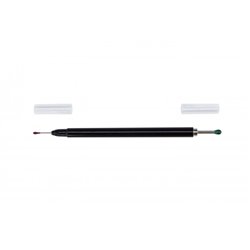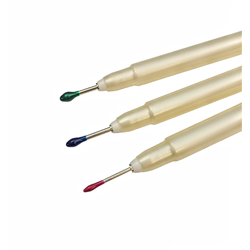AFV stands for Armoured Fighting Vehicle. These versatile military machines come in many shapes, sizes and forms but...
No products
Product successfully added to your shopping cart
There are 0 items in your cart. There is 1 item in your cart.
Search Tips
Christmas and New Year
We are dispatching orders every weekday apart from Christmas Day, Boxing Day and New Year's Day.
If you order is time critical, select next day delivery at checkout.
The shop in Sandown is closed from 25th December, reopening on 30th December.
What is a "pick and place tool"?
A pick and place tool is an aid for modellers, designed to handle small, intricate parts with precision and care. In the world of scale modelling, where details matter, it can often be challenging to manipulate tiny pieces by hand, especially when working on delicate components like photo-etched parts, decals, or miniature accessories. A pick and place tool allows you to grasp these fiddly items without damaging or losing them, making it far easier to position them accurately on your model.
Typically, these tools feature a tacky or slightly adhesive tip, which provides just enough grip to pick up small pieces without leaving residue. This makes them particularly useful when dealing with components that could be easily marred by tweezers or forceps, such as transparent parts or decals. The tool allows you to apply parts with care, maintaining alignment and control as you assemble your model. For highly detailed work, this precision is critical, and the pick and place tool excels at providing just that.
The tool is especially useful in the later stages of model building, when you're applying finishing touches like decals or fragile, pre-painted parts. Many modellers find that using their fingers or traditional tweezers at this stage can be cumbersome, as even the slightest movement can cause misalignment or damage. A pick and place tool mitigates this risk by allowing you to position the part slowly and with control, while the adhesive tip prevents the piece from slipping.
Some pick and place tools come with interchangeable tips of varying levels of tackiness, which can be adjusted depending on the material you're working with. This flexibility allows you to pick up anything from lightweight plastic to heavier metal parts, ensuring a secure grip without over-stressing the component. For example, applying a small photo-etched part requires a light touch, whereas placing a resin component may need a bit more adhesion.
Moreover, using a pick and place tool minimises the risk of static electricity, which can sometimes cause tiny parts to behave unpredictably, particularly when working with very small pieces. This can be an issue when handling things like grass tufts or powdered pigments. With a pick and place tool, the adhesion is controlled, meaning you can avoid sudden static-induced movements.
Many scale modellers who work on projects such as aircraft, tanks or ships will also appreciate the ease this tool brings when dealing with repetitive tasks. If you're placing a lot of rivets, windows or other minute details, the pick and place tool can make the process far less tiring, allowing for greater accuracy over time.
In conclusion, a pick and place tool is a must-have in any modeller's toolkit. Whether you're building complex models with intricate details or simply working on small components that require a delicate touch, this tool helps you achieve a professional finish with far less risk of damaging your work. Its ability to offer precision, control, and flexibility makes it indispensable for scale modellers at any level of experience.
Click here to receive the tips weekly in your mailbox. You can unsubscribe at any time.









